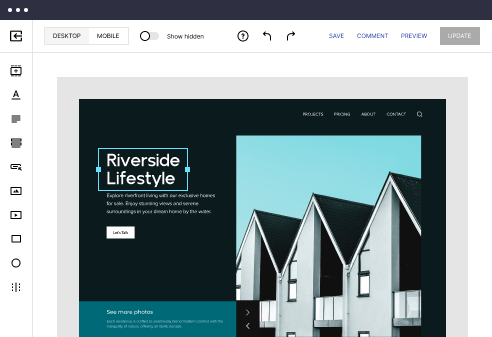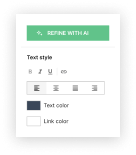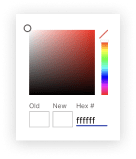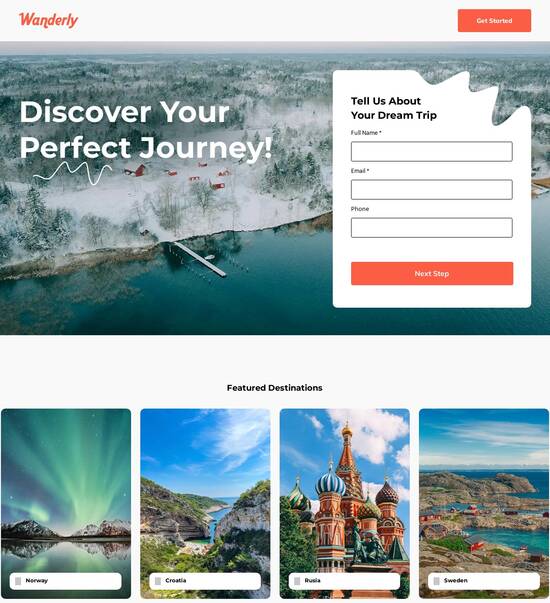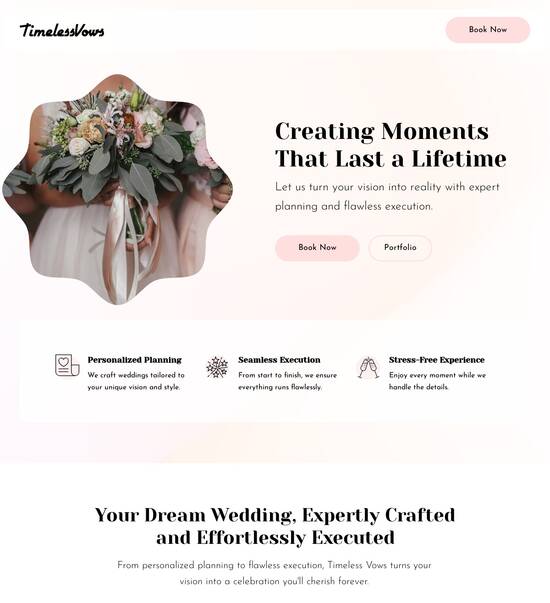
HTML page template with interactive click-through pop-up
Explore Similar TemplatesAbout template
Use HTML page templates with interactive click-through pop-up and make your communications easy and transparent. Try our solution today.
Recommended templates
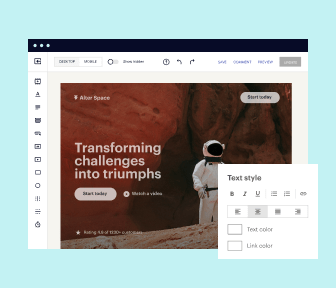
Easy to build without coding
With the intuitive drag-and-drop builder, anyone on your team can create high-converting pages without any knowledge of code or design. Make enhancements to your landing page with custom widgets using Javascript, HTML/CSS, or third-party scripts.
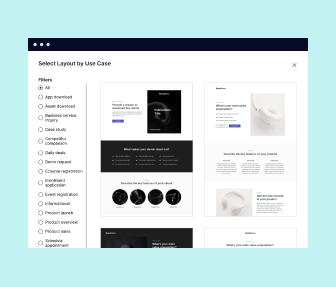
Multiple layouts for any industry and goal
Select from 500+ landing page layouts built to boost conversions across industry-specific scenarios. Customize them by adjusting fonts, adding images, and generating on-brand content with the AI assistant. Quickly scale with Instablocks® and Global Blocks that you can save, reuse, and update globally.
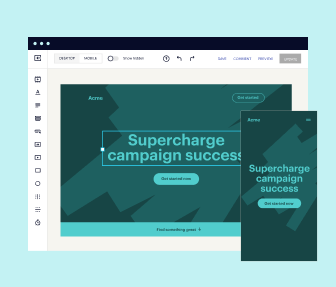
Loads fast and looks polished on any device
Every template is responsive, which means they present professionally on any device and load blazingly fast with our Thor Render Engine. You can also power them up with Google AMP technology to deliver an unparalleled mobile experience and drive higher conversions.
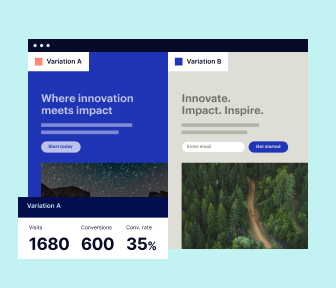
Robust analytics & experimentation
Get real-time updates and reporting across all your devices, showing the number of visitors, conversions, cost-per-visitor, and cost-per-lead. Launch AI-powered experiments, run A/B tests, and use heatmaps to analyze user behavior, then optimize your landing page to maximize conversions.
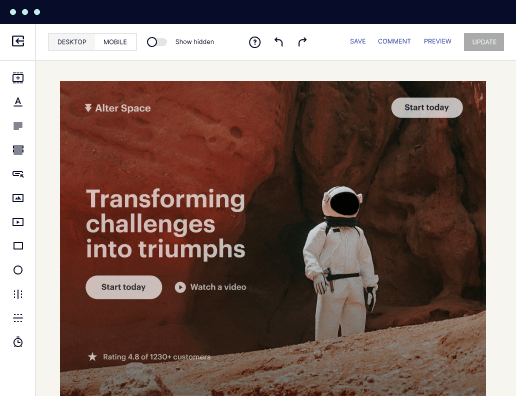
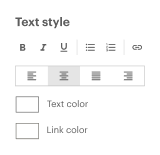
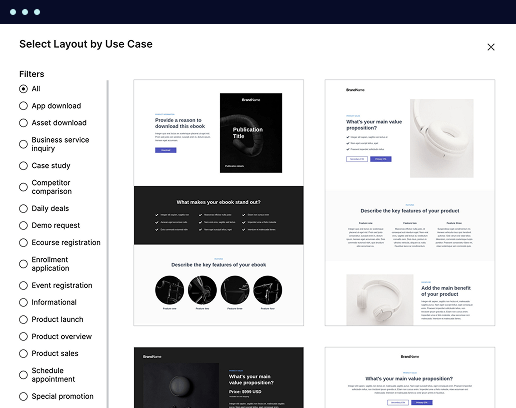
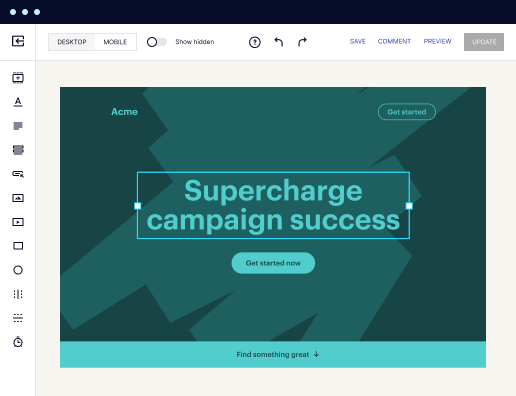
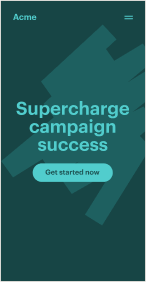
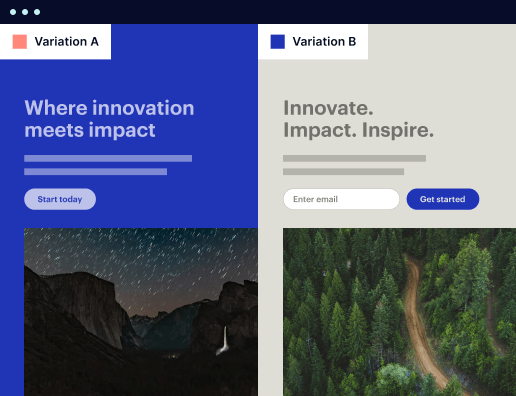
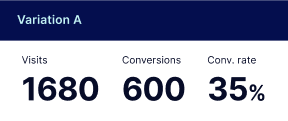
Easy to build without coding
With the intuitive drag-and-drop builder, anyone on your team can create high-converting pages without any knowledge of code or design. Make enhancements to your landing page with custom widgets using Javascript, HTML/CSS, or third-party scripts.
Multiple layouts for any industry and goal
Select from 500+ landing page layouts built to boost conversions across industry-specific scenarios. Customize them by adjusting fonts, adding images, and generating on-brand content with the AI assistant. Quickly scale with Instablocks® and Global Blocks that you can save, reuse, and update globally.
Loads fast and looks polished on any device
Every template is responsive, which means they present professionally on any device and load blazingly fast with our Thor Render Engine.
Robust analytics & experimentation
Get real-time updates and reporting across all your devices, showing the number of visitors, conversions, cost-per-visitor, and cost-per-lead. Launch AI-powered experiments, run A/B tests, and use heatmaps to analyze user behavior, then optimize your landing page to maximize conversions.
All the features you need to build lead-generating landing pages
Explore more featuresLearn how to build top-performing landing pages for any goal
FAQs
Leading the way in building high-performing landing pages





Maximize your ROI with Instapage's powerful landing page and CRO platform
Instapage is the ultimate solution for marketers aiming to design high-converting landing pages that significantly enhance their campaign performance. With its user-friendly interface and a wealth of features, Instapage allows you to launch effective pages without needing coding skills. This guide will walk you through the essential steps of creating impactful landing pages using Instapage, ensuring your marketing campaigns can accelerate, optimize, scale, and maximize ROI.
Why choose Instapage for your landing pages?
Choosing the right platform for creating landing pages is crucial for maximizing your digital marketing efforts. Instapage stands out due to its user-friendly features that cater to diverse audiences across various industries, such as business services, education, and financial services. Here are key reasons why Instapage is the perfect choice:
- Pre-built templates: Instapage offers over 100 high-converting landing page templates, making it easy to start your campaigns quickly.
- In-built optimization tools: The platform includes heatmaps and A/B testing features, enabling you to understand user behavior and improve conversions continuously.
- Collaboration capabilities: Enhance teamwork with real-time editing and feedback features, allowing for faster page production.
Step 1: Choose the right template
Start your landing page creation process by selecting a suitable template. With Instapage's diverse library, you can find a design that aligns with your campaign goals. Here’s how to navigate through the template selection:
- Browse through categories: Organize templates based on your specific industry or campaign type.
- Utilize filters: Narrow down options by using filters for layout, style, and purpose, ensuring you find the best fit quickly.
- Preview before selecting: Take advantage of the preview feature to see how the template looks and if it meets your expectations.
Step 2: Customize with lead generation elements
Once you've selected a template, it's time to customize it to capture leads effectively. Personalize your landing page using the following elements:
- Forms: Use lead capture forms to collect contact information and nurture leads later.
- Call-to-action buttons: Strategically place clear CTAs throughout the page to guide users toward the desired action.
- Dynamic text replacement: Tailor messaging to match your advertising campaigns, enhancing relevance for your audience.
Step 3: Optimize and publish your landing page
After customizing your landing page, it's crucial to optimize it for conversions before hitting publish. Employ these tactics:
- Conduct A/B testing: Experiment with different page elements to see what resonates best with your audience.
- Monitor analytics: Leverage Instapage’s analytics dashboard to track performance and make data-driven adjustments.
- Iterate based on feedback: Encourage users to provide feedback and use this information to improve page effectiveness.
By following these steps, you can create landing pages that not only attract visitors but also convert them into leads, thereby maximizing your marketing efforts.
Ready to transform your campaigns? Get started with Instapage today and unlock the full potential of your digital marketing strategies!
People also ask about HTML page template with interactive click-through pop-up
HTML page template with interactive click-through pop-up
Understanding HTML page templates: revolutionizing user engagement with interactive pop-ups
The online landscape has evolved dramatically, and with this evolution, businesses are continuously exploring innovative ways to engage users. HTML page templates have become essential tools for marketers looking to enhance user interactions. One specific feature that stands out is the interactive click-through pop-up. These pop-ups have transformed traditional online engagement strategies, allowing brands to create tailored experiences that cater to the needs and preferences of their users.
The evolution of web engagement techniques
Historically, web engagement was primarily focused on static content. Early websites offered limited interactivity, which often resulted in high bounce rates as users navigated away due to lack of engagement. However, as technology progressed, the introduction of HTML and CSS allowed for the rise of interactive elements in web design. Marketers started to recognize the potential of engaging visuals, animations, and interactive features to captivate audiences. Today, the combination of sophisticated HTML templates and engaging pop-ups has revolutionized the way brands communicate with users.
The significance of pop-up features cannot be underestimated in modern websites. Reports indicate that effective pop-ups can lead to substantial increases in user engagement. For example, studies show that properly designed pop-ups can reduce bounce rates dramatically. When executed correctly, these interactive elements encourage users to stay on the site longer, interact with additional content, and ultimately convert into paying customers.
Defining the interactive click-through pop-up
An interactive click-through pop-up is a digital element that appears on a website and prompts users to take specific actions. An effective pop-up has several key characteristics, including clear messaging, compelling visuals, and a straightforward call to action. These pop-ups come in various formats, such as promotional offers, surveys, or newsletter subscriptions. Their functionality can range from simple visibility on user interaction to more complex versions that require scrolling or timed engagement.
Interaction models play a critical role in ensuring a seamless user experience. For instance, click-based triggers prompt a pop-up when a user clicks a particular area of the page, while timed displays appear after a user has spent a specified amount of time on a site. The central goal is to prioritize user-centered design principles that enhance the user experience rather than detract from it.
The technical backbone: HTML and CSS code integration
Creating a successful pop-up requires a solid understanding of HTML and CSS. Structuring your HTML page with templates involves using a basic framework that allows for flexibility and customization. Essential elements of a typical HTML template include the header, body, and footer sections, each of which can be modified to house the pop-up functionality. By embedding JavaScript into the HTML, you can control when and how the pop-up appears, ensuring that it enhances rather than disrupts the user experience.
Incorporating CSS is crucial for designing eye-catching pop-ups. Using essential CSS properties such as background color, margins, padding, and shadows can make your pop-up stand out while maintaining usability. Additionally, it’s vital to accommodate responsive design adjustments, ensuring that pop-ups function well on both mobile and desktop devices. Mobile optimization is particularly important, as an increasing number of users access websites via their smartphones.
Expanding business potential through pop-ups
Using pop-ups strategically can dramatically expand business potential by converting website visitors into leads. Effective pop-ups can gather email addresses, drive traffic to specific landing pages, or facilitate direct purchases. Reports indicate that brands leveraging pop-up tactics see significant increases in leads and sales. By focusing on value-driven content within pop-ups, companies can attract user attention and encourage exploration.
These elements also play an essential role in conversion rate optimization (CRO). Implementing targeted pop-ups allows brands to tailor their messaging and offers based on user behavior, resulting in improved performance metrics. Businesses that regularly analyze the effectiveness of their pop-ups can witness long-term impacts on customer retention and loyalty, reinforcing the need for consistent evaluation and adjustment of engagement strategies.
Best practices for designing effective pop-ups
Timing and frequency of pop-up displays are critical aspects to consider. Optimal timing often depends on user behavior; for example, displaying a pop-up shortly after a user has engaged with content can increase effectiveness. Conversely, frequent interruptions can lead to user frustration, necessitating a careful balance to maintain visibility without overwhelming the audience. Consider using A/B testing to determine the best timing strategies for your specific target market.
Content is equally important when designing pop-ups. Crafting powerful and persuasive messaging can create maximum impact by highlighting the value proposition clearly. Incorporating dynamic content personalization techniques, where pop-ups are tailored to individual user segments, can significantly enhance engagement, making users feel that the brand understands their needs.
Exploring interactive features to enhance engagement
Adding multi-stage click-through options can help create a more immersive and engaging user experience. Structuring a step-by-step process means users interact incrementally, fostering a sense of progression that can keep them interested. Integrating interactive elements such as buttons, forms, and videos can also provide additional layers of engagement, allowing users to explore content that facilitates their decision-making process.
Measuring the success of your pop-ups is equally important. Key performance indicators (KPIs) such as conversion rates, user engagement levels, and newsletter sign-ups can provide valuable insights into the effectiveness of pop-ups. Utilizing tools that track visitor interactions and behaviors can help refine strategies and ensure that the pop-ups remain effective over time.
Troubleshooting common issues with pop-ups
Addressing user frustration is crucial when implementing pop-ups. Many users utilize pop-up blockers, resulting in decreased engagement. Therefore, strategies to reduce user annoyance are essential. For instance, avoid an aggressive display of pop-ups immediately on page entry. Instead, consider more subtle approaches, such as displaying pop-ups only when users attempt to exit the page.
If you notice poor performance in your pop-up design, identifying common pitfalls is essential. Conducting iterative testing and optimization processes can reveal what adjustments might be necessary for achieving better results. By regularly examining user engagement data, marketers can implement improvements that keep pace with evolving user expectations.
Future trends in interactive pop-ups
As technology continues to advance, the importance of AI and machine learning in pop-up design is growing. Predictive analytics allows for personalization at scale, enhancing user experiences by delivering content tailored to individual preferences. This technology could lead to pop-ups that adapt dynamically based on user behavior, ensuring relevance and engagement.
Another exciting future trend involves integrating augmented reality (AR) into pop-up features. AR has the potential to create immersive experiences that engage users differently. This technology could find applications in e-commerce and branding, allowing customers to visualize products in their environment before making purchasing decisions. Such cutting-edge solutions are positioned to redefine user engagement in the coming years.
Case studies of success: brands utilizing pop-ups effectively
Examining real-world examples of impactful pop-ups can provide invaluable insights. Brand A, for instance, experienced a significant increase in leads through strategic timing of their pop-ups. Rather than merely displaying offers, they focused on creating urgency, which resulted in higher user engagement. Brand B took a different approach by employing interactive content. A pop-up that invited users to engage with a quick quiz led to an impressive boost in sales, demonstrating the effectiveness of personal engagement.
These case studies underline essential lessons learned from industry leaders. Continuous innovation and adaptation have proven vital to staying competitive. As brands develop their pop-up strategies, they should remain open to new techniques and formats that resonate with their target audiences while also evaluating the effectiveness of implemented methods.
Engage, optimize, and transform
Empowering businesses through interactive features is essential in a competitive digital landscape. Leveraging the capabilities of HTML and CSS for engaging pop-ups can enhance user interaction and drive conversion. By employing pragmatic strategies and forward-thinking design practices, organizations can navigate the complex web ecosystem effectively, ensuring their online presence remains both relevant and impactful. This commitment to user engagement ultimately leads to sustainable growth and customer satisfaction.
Ready to skyrocket conversions?
Supercharge your ad campaigns with high-performing landing pages
Get started